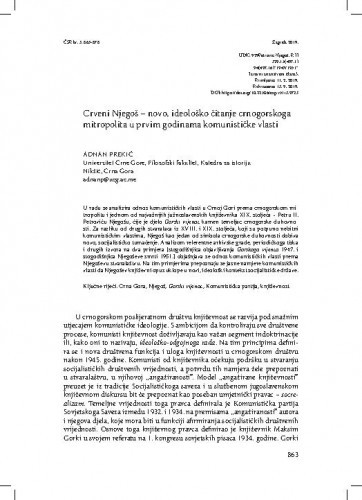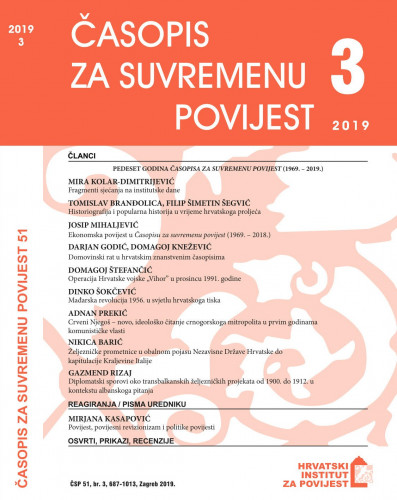U radu se analizira odnos komunističkih vlasti u Crnoj Gori prema crnogorskom mitropolitu i jednom od najvažnijih južnoslavenskih književnika XIX. stoljeća – Petru II. Petroviću Njegošu, čije je djelo Gorski vijenac kamen temeljac crnogorske duhovnosti. Za razliku od drugih stvaralaca iz XVIII. i XIX. stoljeća, koji su potpuno nebitni komunističkim vlastima, Njegoš kao jedan od simbola crnogorske duhovnosti dobiva novo, socijalističko tumačenje. Analizom referentne arhivske građe, periodičkoga tiska i drugih izvora na dva primjera (stogodišnjica objavljivanja Gorskoga vijenca 1947. i stogodišnjica Njegoševe smrti 1951.) objašnjava se odnos komunističkih vlasti prema Njegoševu stvaralaštvu. Na tim primjerima prepoznaju se jasne namjere komunističkih vlasti da Njegošev književni opus uklope u novi, ideološki kontekst socijalističke države.; The paper analyses the attitude of communist authorities in Montenegro towards the Montenegrin metropolitan and one of the most important South Slavic writers of the 19th century, Petar II Petrović Njegoš. His work, primarily the book Gorski vijenac, is said to be the cornerstone of Montenegrin spirituality. Unlike other writers of that period, the Communist Party could not dismiss Njegoš’s work. On the contrary, the work of the poet was interpreted in a new way by the Party, which used it in its efforts to build a new socialist society. Through the analysis of archival material, periodicals, and other sources, the author explains the new relationship of communist authorities towards the works of Petar II Petrović Njegoš. A special focus is placed on two events, the centenary of the publication of Gorski vijenac in 1947, and the centenary of Njegoš’s death in 1951, when the intentions of the Communist authorities to recognize and point out that the literary opus of Njegoš fits into a new, ideological context of a socialist state became clear.
Sažetak

 Časopis za suvremenu povijest : 51,3(2019) / glavni i odgovorni urednik, editor-in-chief Zdravka Jelaska Marijan.
Časopis za suvremenu povijest : 51,3(2019) / glavni i odgovorni urednik, editor-in-chief Zdravka Jelaska Marijan.